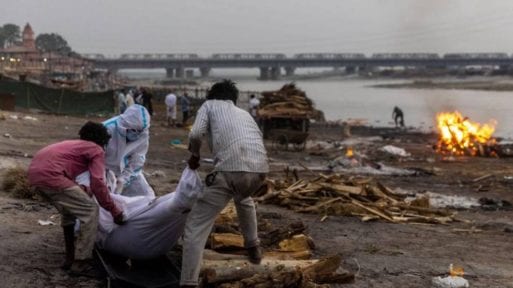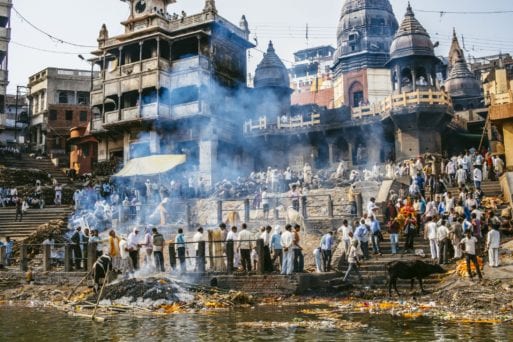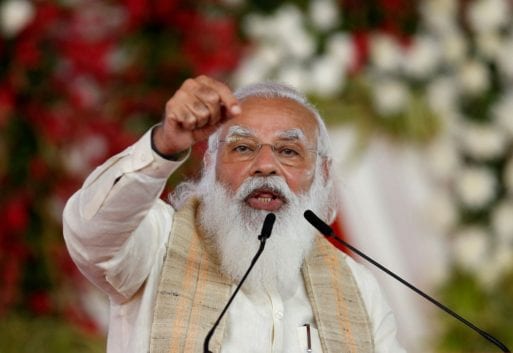
Men gather bodies to be burned on pyres on the banks of the Ganges.
Credit: Reuters, Danish Siddiqui
At the height of India’s battle with COVID-19 on May 9, 2021, there were more than 3,750,000 active cases. The daily death toll has been reported as 3,000, but many experts believe it is much higher. The people of India are struggling to deal with this many deaths in rapid succession.
The Crisis
The majority of India’s population are Hindus, who traditionally cremate their dead. However, the scarcity and exorbitant prices of wood have made quick funeral proceedings a challenge. In addition, the leaders trusted to give last rites and perform services for the bereaved families are in such high demand that many families have resorted to bribes and intimidation in order to have their loved ones put to rest.

Manikarnika Ghat, Varanasi, India
Credit: TripAdvisor
Cultural Chaos
Historically, Hindus have brought their deceased family members to the holy city of Varanasi to be cremated. Once they have their loved one’s ashes, they spread them in the Ganges River, which is also held as sacred. Hindus believe if they set the ashes free in the holy river, their loved one’s soul will escape the cycle of reincarnation and find its way to heaven instead. This process of reaching heaven is called “moksha,” and in order to achieve it, the body must be burned and released at a holy site.
With the rise of COVID-19, the already constantly burning funeral pyres have been overtaxed, and families are not able to fulfill their religious traditions. Many people have chosen to set their loved one’s bodies afloat in the Ganges without being cremated. The holy river is now littered with the bodies of COVID-19 victims, who eventually wash ashore in neighboring towns.
The Government’s Response
In order to combat the distressing sight of swollen bodies drifting in the Ganges, India’s government has beefed up its security at common dump sites along the river. They have also offered bereaved families 5,000 rupees (68 USD) to offset the cost of wood to burn the bodies of COVID-19 victims before setting the ashes adrift.

Narendra Modi, India’s Prime Minister
Credit: Reuters, Amit Dave
India’s prime minister Narendra Modi had hoped to ignore the hardships that India has endured. While Modi held public rallies campaigning for his re-election, his people abandoned their loved ones’ bodies without fulfilling the religious last rites. The public has raged against his “too little, too late” response to the coronavirus. Hashtags like #SuperSpreaderModi and #ResignModi have flooded social media outlets over the past two months. Not only has he operated as though his country was not in the midst of a crisis, his own events have contributed to the spread of the virus.
Modi may have wanted to shut his eyes to the distress of India, but the bodies in the Ganges are too disturbing to overlook. Though the surge is slowing down, there does not seem to be a plan for recovery. If governments are only concerned with covering up their people’s suffering, how can they begin the healing process?

 India’s Holy River Inundated with Bodies of COVID-19 Victims
India’s Holy River Inundated with Bodies of COVID-19 Victims


 How Dare You Die Now!
How Dare You Die Now!

 “Help Me, Helen”
“Help Me, Helen”














